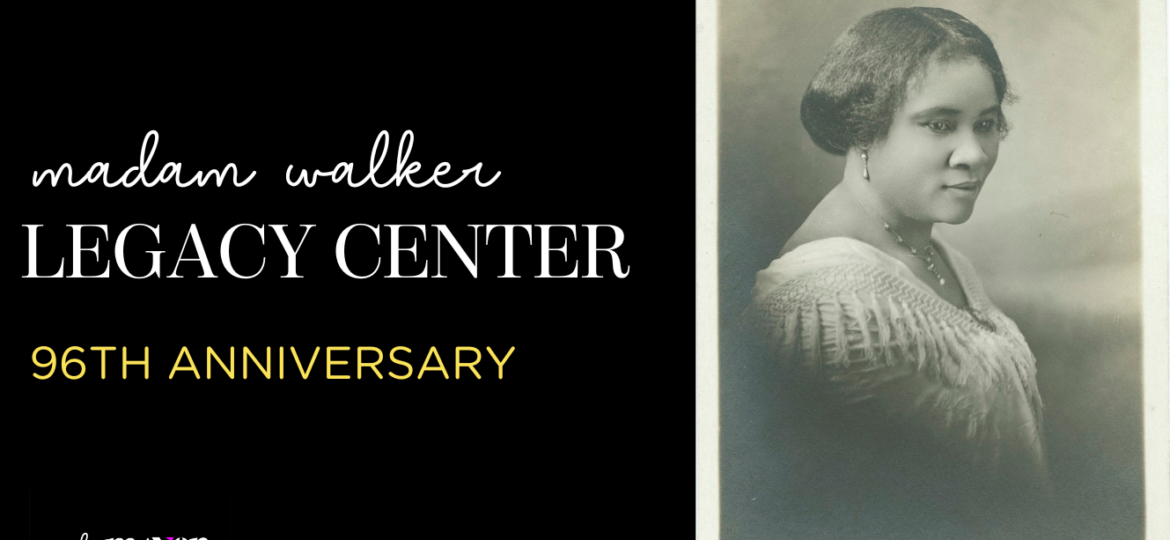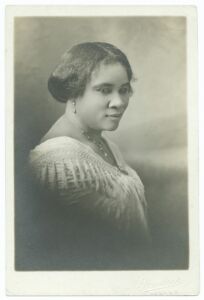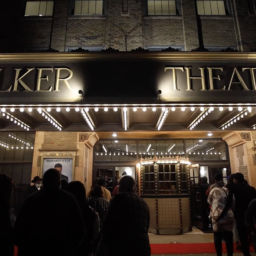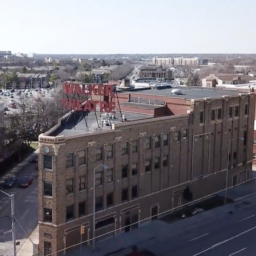

Created in partnership with our friends at Madam Walker Legacy Center.
On the northwest corner of West St. and Indiana Avenue sits a piece of local and national history, in the form of the Madam Walker Legacy Center. The building, history, and their supporters have withstood the test of time, not to mention gentrification efforts that have rid Indiana Avenue of most of its historic buildings–and communities. Did you know that in the late 1800s, Indiana Avenue was home to one-third of the African American population in Indianapolis? Despite gentrification, Madam Walker’s presence and influence remain here. The Madame Walker Legacy Center is the last surviving iconic building on Indiana Avenue. It remains a beacon of pride, hope, and the beauty that lies in diversity, ensuring that the significance of Madam C.J. Walker, Indiana Avenue, and African-American cultural arts are not forgotten.
Madam Walker Herself
In 1867, Madam C.J. Walker, then known as Sarah Breedlove, was born into a sharecropping family, working on a Louisiana plantation. She married and had her child, A’Lelia, young. Walker moved to St. Louis, Missouri after the death of her first husband, and began working to address the alopecia and other hair and scalp issues she and other Black women were experiencing.

She used “The Great Wonderful Hair Grower,” a creation of Annie Turbo Malone, a Black businesswoman who employed Black women to sell her products. Walker began working under her and, following her move to Denver, Colorado, launched her own line of products, namely, “Madam Walker’s Wonderful Hair Grower.” (Women’s History)
Madam Walker moved to Indianapolis in 1910 and opened the Walker Manufacturing Company at 640 N. West St. She also began employing Black men and women–about 40,000 across the U.S., Central America, and the Caribbean!-as salespeople for her products. In 1917, she founded the National Negro Cosmetics Manufacturers Association, and also helped to organize the NAACP’s Silent Protest Parade against lynching, with the likes of W.E.B. Du Bois. (Women’s History)
Having local influence, as well as national, Walker gave back to the city of Indianapolis graciously, supporting, and rallying others to support, Naptown’s Black organizations. These included the Senate Avenue YMCA, Flanner House, and the recently lost Bethel African Methodist Episcopal (A.M.E.) Church. She also contributed to the arts scene, financing Black artists, musicians, and actors. Indiana Avenue and it’s black-owned businesses thrived with such a landlord as Madam C.J. Walker. (Indiana Historical Society)
The Legacy Center

The Art Deco-style building we know and love was completed in 1927, eight years after Walker’s death. She purchased the land on West and Indiana Avenue following a 1914 racial discrimination dispute with the (old) Isis Theatre, who increased admission prices for Black patrons, but not white ones. (MWLC)
While serving as her manufacturing company, renowned beauty school and salon, restaurant and other amenities, it also housed a 1500-capacity theater. This theater served Black Indianapolis as the one theater they could attend without having to deal with racist pricing, seating arrangements, or other unfair treatment. Essentially, the building was a one-stop shop for Indianapolis’ black citizens.
The Madam Walker Legacy Center remains a cornerstone of Indianapolis. Representing a significant piece of the nation’s history and celebrating its 96th Anniversary, the Madam CJ Walker Building was designated a National Historic Landmark in 1991 and placed on the National Register of Historic Places in 1980. In 2018, it underwent a restoration, partnering with IUPUI, Indiana University, and the Lilly Endowment, Inc. The non-profit is “dedicated to preserving the legacy of Madam CJ Walker by providing cultural education, promoting social justice, supporting entrepreneurship and empowering youth to become the next generation of entrepreneurs and civic leaders.” While the ballroom provides space for more intimate performances, like local jazz greats Rob Dixon and Clint Breeze and the Groove, the main stage has hosted the likes of Ella Fitzgerald, Nat King Cole, Patti LaBelle, Michael Bolton, and Lena Horn. In June, it will welcome Gladys Knight (MWLC).
Get Involved!
If you would like to get involved with this mission, here are some upcoming events to get you started:
May 5, 2023 @ 7:00 PM
Average White Band & Najee Concert
AWB created a string of hit songs in the 1970s and 80s. They’ve teamed up with saxophonist Najee for a show that’s sure to take you back.
June 16, 2023 – June 18, 2023 @ ALL DAY

This community event will include a Friday evening gala and after hours soiree, Saturday and Sunday (FREE!) block parties, and a Sunday morning brunch. Additionally, those interested in sponsoring the event can find more information here.
June 16, 2023 @ 8:30 PM
Gladys Knight to headline the Legacy Fest Concert
I, personally, would highly recommend this concert. Mrs. Knight has graced Indianapolis on several occasions and always brings an engaging show filled with energy, love, and just the right amount of nostalgia.
Kay Hawthorne is a community anthropologist with experience in archives, youth programming, and environmental justice work. Follow her on LinkedIn.











